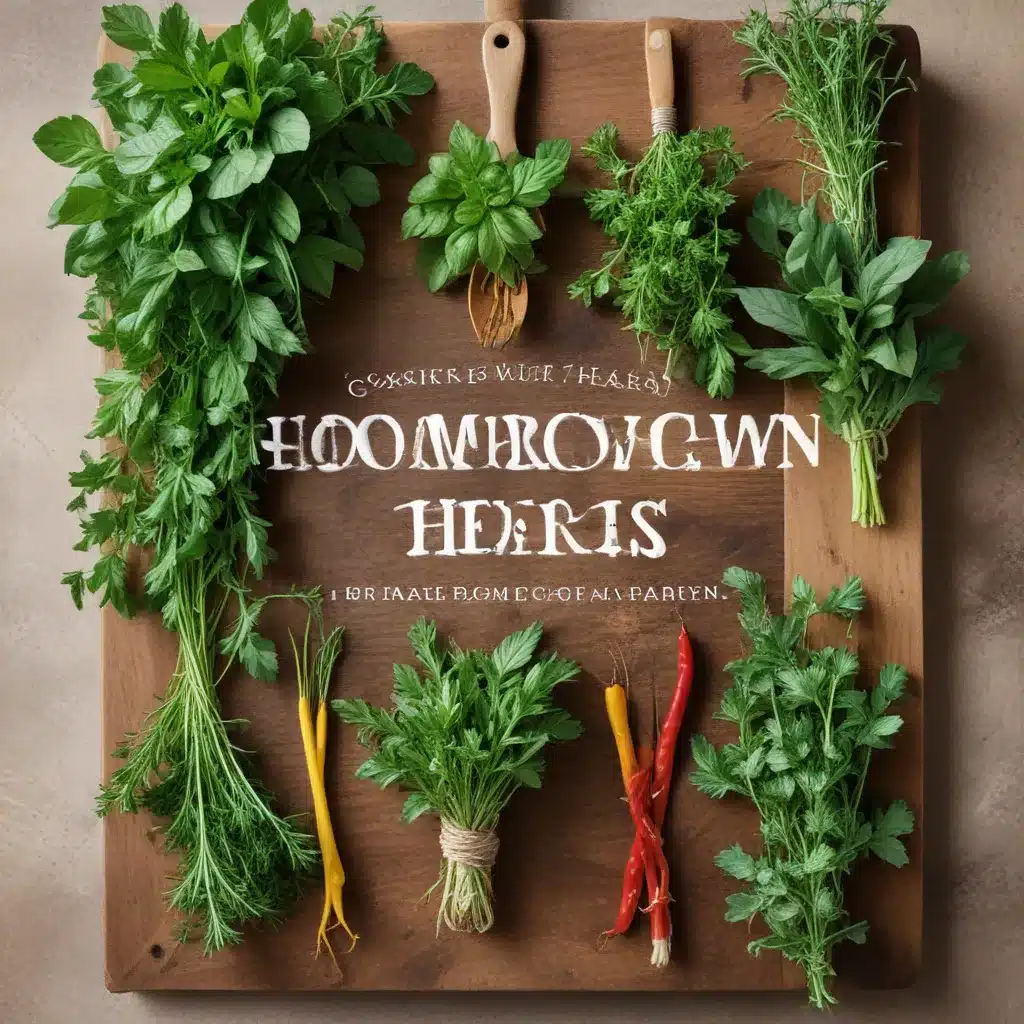
Herbs are the unsung heroes of the culinary world, elevating even the simplest dishes with their vibrant flavors and aromas. At Crooked Pines Farm, we believe that the true essence of farm-to-table cooking lies in the seamless integration of homegrown herbs into our recipes. Join us as we embark on a delectable journey, exploring the art of incorporating these fragrant botanicals into mouthwatering dishes and beyond.
Herb Varieties for the Home Garden
Whether you’re a seasoned gardener or a novice green thumb, the joy of cultivating your own herb garden is unparalleled. At Crooked Pines, we’ve carefully curated a diverse selection of herbs that thrive in our climate and complement a wide range of culinary applications.
Common Culinary Herbs: These versatile workhorses are the backbone of many recipes, from savory stews to fresh salads. Think classic basil, rosemary, thyme, parsley, and oregano — the building blocks of Mediterranean and European cuisines.
Aromatic Herbs: Beyond their flavor profiles, certain herbs boast captivating scents that can transform a dish. Fragrant lavender, fragrant lemon verbena, and fragrant mint are just a few examples that can lend an enchanting element to both sweet and savory creations.
Medicinal Herbs: In addition to their culinary uses, many herbs possess remarkable medicinal properties. Herbs like chamomile, echinacea, and peppermint can be incorporated into teas, tinctures, and topical remedies to support overall health and wellbeing.
Herb Cultivation Techniques
Successful herb gardening starts with understanding the unique needs of each variety. At Crooked Pines, we’ve honed our techniques to ensure our herbs thrive, from preparing the soil to optimizing sunlight and water requirements.
Soil Preparation: Herbs generally prefer well-draining, nutrient-rich soil. We incorporate compost and aged manure to enrich the earth, ensuring our plants have the nourishment they need to flourish.
Planting and Spacing: Proper spacing is crucial for herbs to reach their full potential. We carefully consider the mature size of each plant and arrange them accordingly, allowing for ample air circulation and companion planting opportunities.
Watering and Sunlight Requirements: Most culinary herbs thrive in full sun, though some, like parsley and chives, may tolerate partial shade. We meticulously monitor soil moisture, adjusting our irrigation schedules to meet the unique needs of each herb.
Incorporating Homegrown Herbs into Cooking
The true magic of homegrown herbs lies in their ability to infuse every dish with unparalleled flavor and aroma. At Crooked Pines, we delight in showcasing the versatility of these botanical treasures, from simple vegetable preparations to sophisticated entrees.
Herb-Infused Recipes
Vegetable Dishes: Fresh herbs can transform even the most humble of veggies. Take our sautéed green beans recipe, where a blend of garlic, onion, and herb-infused olive oil elevates the natural sweetness of the beans. Or try our garden-fresh tomato sauce, bursting with the flavors of homegrown basil, oregano, and thyme.
Meat and Poultry Dishes: Herbs are the secret weapon for adding depth and complexity to proteins. A simple roast chicken becomes truly extraordinary when rubbed with a fragrant blend of rosemary, thyme, and lemon zest. And a hearty beef stew simmers to perfection, infused with the earthy aromas of bay leaves and savory.
Pasta and Grains: Herbs are the perfect complement to the neutral canvas of pasta and grains. Fresh basil and pine nuts come together in a vibrant pesto, while fragrant dill and lemon zest lend their bright, summery notes to a cold grain salad.
Herb-Based Seasonings and Condiments
Beyond their starring roles in recipes, herbs can also shine as the foundation for a variety of seasonings and condiments. At Crooked Pines, we love to experiment with herb-infused oils and vinegars, capturing the essence of our garden’s bounty in every drizzle.
Herb-Seasoned Salts and Rubs: Freshly dried herbs, when combined with coarse sea salt or ground spices, create flavorful seasoning blends that can elevate everything from roasted meats to baked potatoes.
Homemade Herb Pesto: The possibilities for homemade pestos are endless. We’ve crafted fragrant versions using basil, cilantro, and even wild foraged nettles, each one a delightful addition to pastas, sandwiches, and more.
Health Benefits of Cooking with Homegrown Herbs
In addition to their culinary prowess, herbs are celebrated for their remarkable health benefits. At Crooked Pines, we’re passionate about sharing the nutritional and medicinal properties of the herbs we grow, empowering our community to embrace the power of these botanical wonders.
Nutritional Profile of Herbs
Herbs are veritable powerhouses of vitamins, minerals, and antioxidants. Many varieties, like parsley, sage, and rosemary, are rich in vitamins A and C, while others, such as thyme and oregano, boast impressive concentrations of iron and calcium.
Medicinal Properties of Herbs
The therapeutic potential of herbs extends far beyond the kitchen. Certain varieties, like chamomile and peppermint, possess anti-inflammatory and digestive-soothing properties, while herbs like echinacea and elderberry can provide a natural boost to the immune system.
Preserving and Storing Homegrown Herbs
As the seasons change, we find ourselves with an abundance of fresh herbs. At Crooked Pines, we’ve mastered the art of preserving and storing these precious botanicals, ensuring we can enjoy their flavors year-round.
Drying and Dehydrating Herbs
Air drying is a simple and effective method, allowing the herbs to gradually lose their moisture and develop a more concentrated flavor. For a quicker turnaround, we sometimes opt for oven drying or even the microwave to preserve the herbs at the peak of their freshness.
Freezing and Freezer Storage
Freezing is another excellent way to extend the life of our homegrown herbs. We’ve found that whole herb freezing and herb cubes or pastes are great options, retaining the vibrant colors and flavors of our garden bounty.
Whether you’re a seasoned home cook or just starting to explore the world of herbs, we hope this guide has inspired you to cultivate and incorporate these flavorful botanicals into your own culinary creations. After all, the true essence of farm-to-table dining lies in the harmonious union of homegrown ingredients and the love we pour into every dish. Happy cooking!


